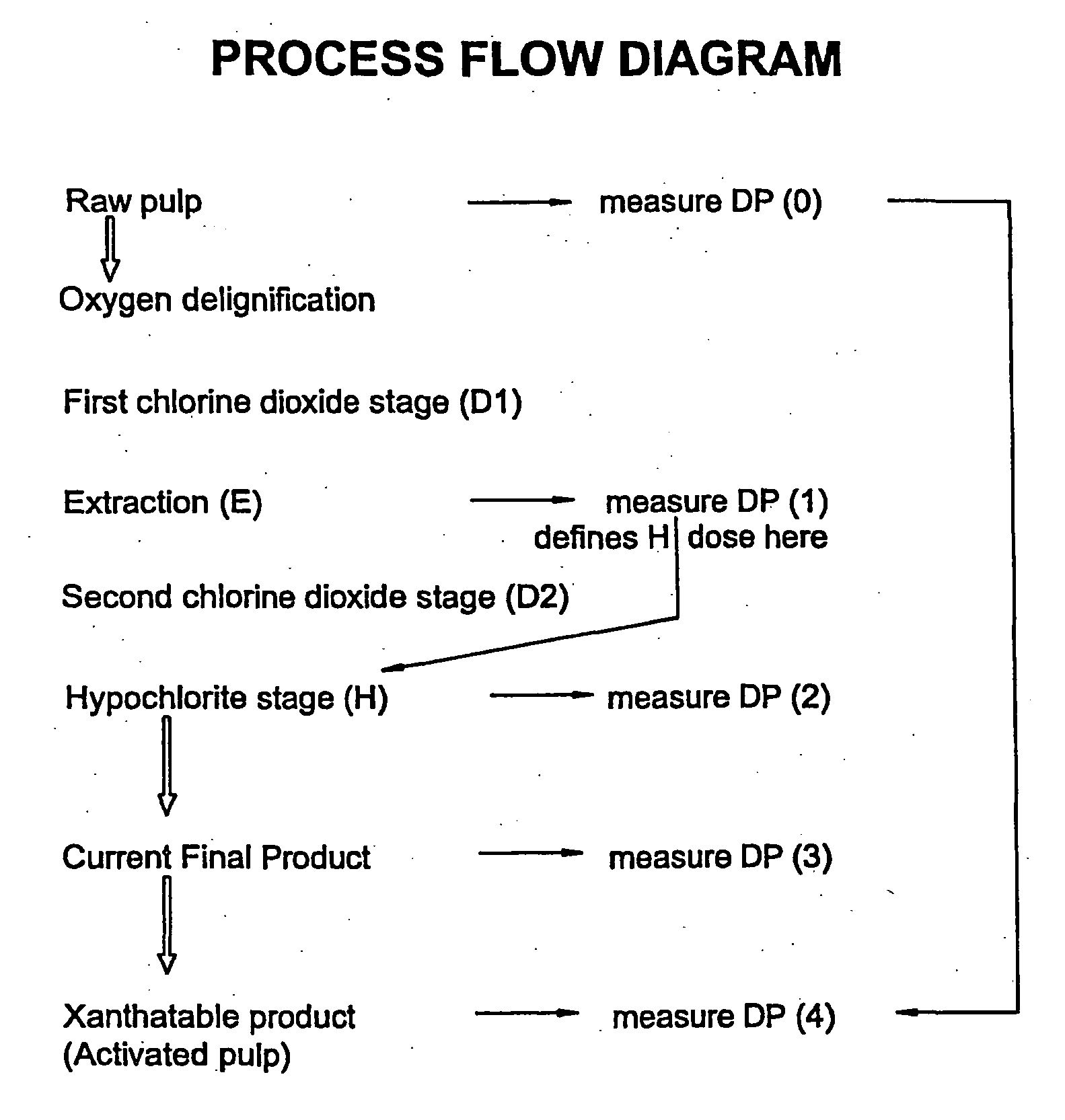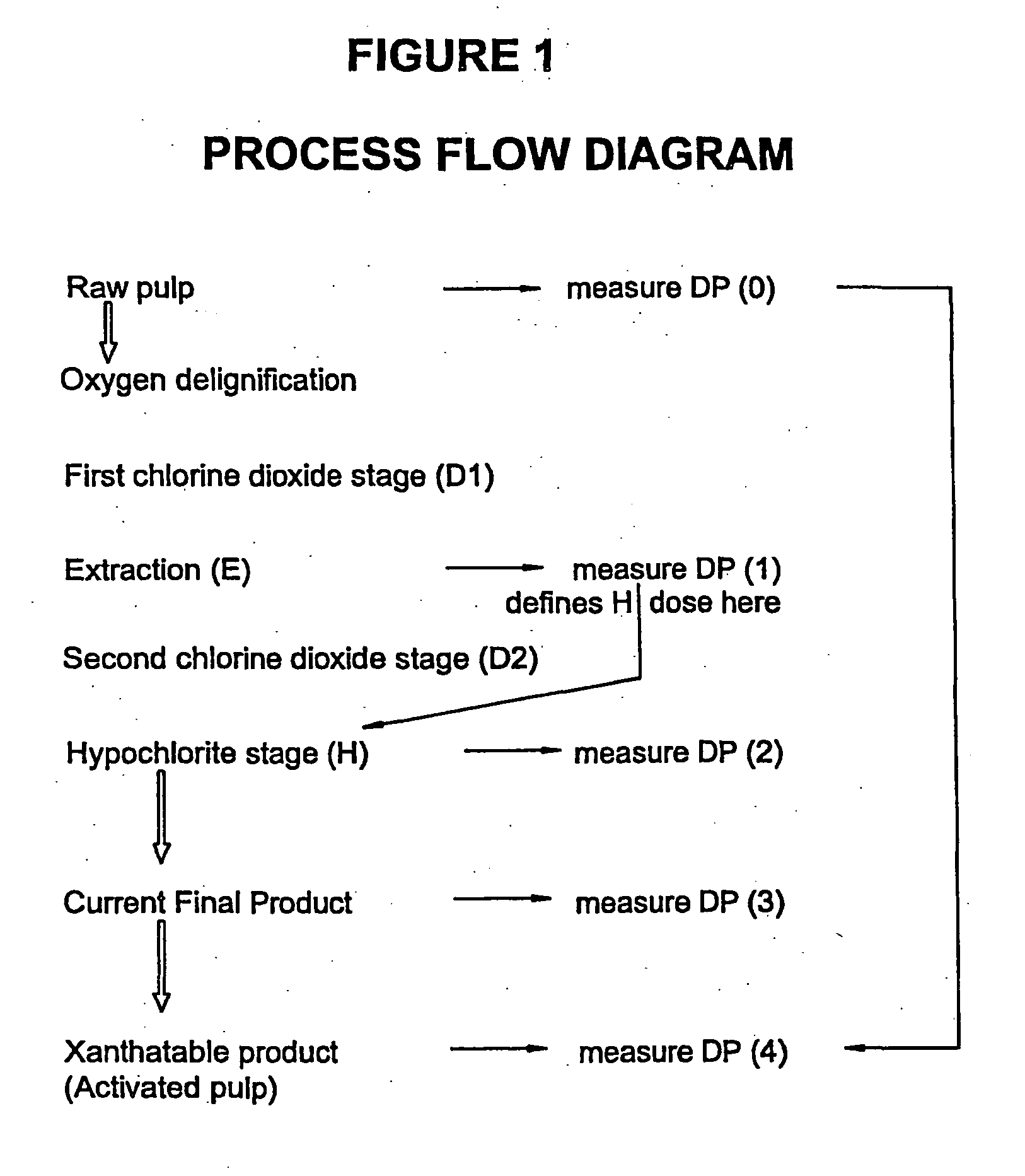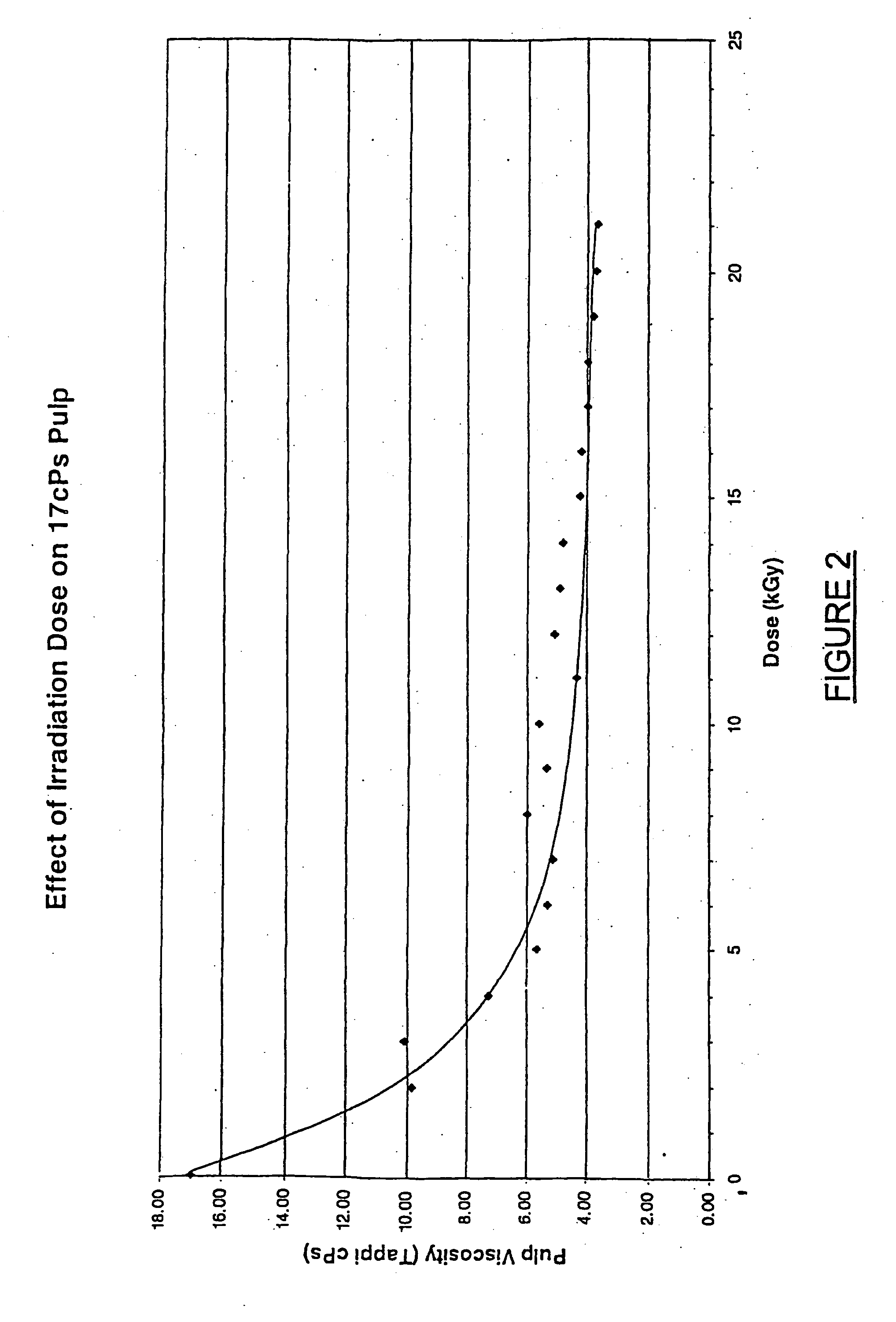Pulp treatment and process
a technology applied in the field of pulp treatment and process, can solve the problems of increasing the processing cost through additional pulp handling, prone to product variability, and thicker shielding that is required, and achieve the effect of reducing environmental problems and reducing the dp rang
- Summary
- Abstract
- Description
- Claims
- Application Information
AI Technical Summary
Benefits of technology
Problems solved by technology
Method used
Image
Examples
example 2
[0085] With particular reference to FIG. 4, post D(2) pulps of different values of DP(1) viscosity were irradiated in the same manner as post DP reduction pulp. This provided final products in either the conventional VSF type product viscosity range, i.e. in the range of about 14 to 25 cPs; or at a higher dose that provided an activated product for use in the VSF process in the range of about 4 to 6 cPs.
example 3
[0086] With particular reference to FIG. 5, when a fixed dose of electron beam irradiation, for example about 15 kGray, was applied to pulp to produce a material for a VSF process, a significant reduction in final product variability was obtained. Taking pulps in the viscosity range from about 14 cPs to about 22 cPs inclusive (--a range of about 9 cPs) at 1 cPs intervals and at a fixed 15 kGray dose, the variability across these products was reduced to only about 0.3 cPs.
[0087] This should be compared to a typical chemical process that gives a viscosity range of about 4 to 5 cPs. An industry best viscosity variation has a range of about 2 cPs.
example 4
[0088] As indicated previously, the existing, i.e. conventional pulp irradiation process is an off-line treatment. The starting DP is accurately known and based on the irradiation equipment and the final required viscosity / dose, an optimum number of pulp sheets for a minimum cost process can be determined.
[0089] In this example with various tests, and with particular reference to FIG. 6, the optimum number of sheets indicated by the equipment supplier was 12 pulp sheets. When irradiated at the prescribed dose of 15 kGray, the results were as shown in FIG. 6. The viscosity variability obtained was about 1.2 cPs on average.
[0090] The invention therefore provides a method of reducing off-spec material as against the conventional chemical route by using the process to trim or adjust the DP post the H stage or to apply higher dose of radiation post the DP(2) stage and thereby save on hypochlorite. This results in a chemicals saving and an environmental pollution abatement or improvement....
PUM
| Property | Measurement | Unit |
|---|---|---|
| Power | aaaaa | aaaaa |
| Viscosity | aaaaa | aaaaa |
| Bioabsorbable | aaaaa | aaaaa |
Abstract
Description
Claims
Application Information
 Login to View More
Login to View More - R&D
- Intellectual Property
- Life Sciences
- Materials
- Tech Scout
- Unparalleled Data Quality
- Higher Quality Content
- 60% Fewer Hallucinations
Browse by: Latest US Patents, China's latest patents, Technical Efficacy Thesaurus, Application Domain, Technology Topic, Popular Technical Reports.
© 2025 PatSnap. All rights reserved.Legal|Privacy policy|Modern Slavery Act Transparency Statement|Sitemap|About US| Contact US: help@patsnap.com



